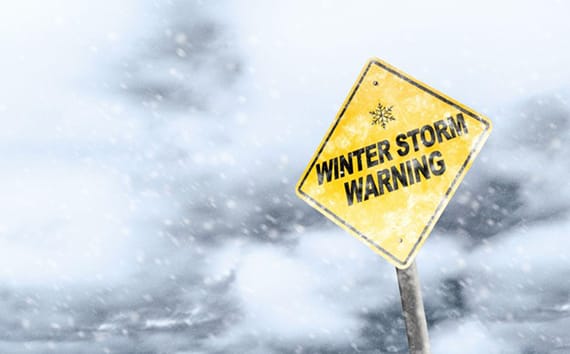There are many things that make the Lone Star State special, from its legendary barbeque to its characteristic independent streak.
Another thing that makes Texas unique from other states is its electric grid. Owing to energy deregulation, Texas owns and operates one of the only state-specific grids in America.
This fact attracted a certain amount of scrutiny in February 2021, when freezing temperatures strained the power grid to its limits, leaving many across the state without power and leading to devastating consequences.
This story is an important one, so let’s get to the bottom of the winter 2021 power grid failure and discuss the improvements on the Texas grid after the storm.
How Does the Texas Power Grid Work?
In the United States, the power grid has three major sections. There’s the Western Interconnection (which serves the Western part of the country), the Eastern Interconnection (which serves the Eastern part of the country), and there’s the Texas power grid (which serves the majority of Texans).
This situation took shape in the opening years of the 20th century, when Texas opted out of the growing thicket of regulations that were proliferating around the power industry. Though these may have been intended to promote energy efficiency while keeping electricity bills low, Texas wanted to preserve the rights of its citizens to make their own decisions with respect to how their power supply chains operated.
The state created its own unique power grid, and it remains in place to this day. The Electric Reliability Council of Texas (ERCOT) is a nonprofit organization that acts as the grid operator. Though it’s an independent entity, it works with regulators and Texas lawmakers in the Texas legislature to craft policy. ERCOT is overseen by the Public Utility Commission of Texas (PUC or PUCT), whose board, in turn, is appointed by the Governor of Texas.
ERCOT operates thousands of miles of power lines that take megawatts of power from power plants, power generators, and other providers and moves it across the Texas grid to places like Austin, Dallas, Houston, and elsewhere in Texas.
Texas has what is known as a deregulated electricity market, meaning that Texans get to choose their power provider. This is sometimes known as “energy choice,” and it stands in contrast to the majority of the country, which must buy power from an appointed local monopoly.
Energy choice leads to market competition as there are more than 140 retail electricity providers (REPs) doing business in the state of Texas. These REPs then compete for business, which can mean lower prices for customers and a variety of plans. For instance, Just Energy offers residential and commercial plans that focus on renewable energy.
According to figures from 2021, the Lone Star State produces more energy than all the other states, providing almost 12% for the entire country. While Texas produces more oil than any other energy product, it also produces about 26% of the country’s wind energy and 25% of its natural gas.
What Was the Texas Winter Storm of 2021?
Owing to its status as the only independent electrical grid in the continental U.S., the Texas grid has always prompted a certain amount of commentary. In 2021 it made headlines when an extreme cold front involving single-digit temperatures hit the state’s power grid.
This was known as Winter Storm Uri, and it was a once-in-a-decade extreme weather event. Winter weather is not uncommon in Texas, but this was severe enough that un-winterized power sources like wind turbines and wells producing natural gas began to fail.
Simultaneously, millions of Texans stayed home and ran their heaters, which caused a high demand for electricity.
Rolling blackouts began, and power outages would eventually leave millions of Texans without electricity for several days.
Enter your ZIP Code and compare electricity rates
In the aftermath, the grid’s reliability was called into question. Many wondered whether the deregulated market could meet peak demand, and whether there would be enough power to meet people’s needs consistently.
It also sparked a conversation around climate change. If events like Winter Storm Uri are to become more common in the future, then grids like ERCOT in Texas will need to take steps to prepare.
So what happened next? How did the officials in governing bodies like the Texas Senate — to say nothing of individual providers and consumers — react to Winter Storm Uri? Keep reading.
Has Texas Upgraded Its Power Grid?
There are a few strategies a state like Texas can take to protect itself from future winter storms and spikes in electricity demand.
The obvious choice would be to work proactively to winterize crucial sources of power. The term “winterization” is exactly what it sounds like — it refers to any process of preparing a structure or object for the cold and windy conditions of winter.
In the case of the electric grid, this can take several forms. For example, if we’re talking about natural gas wells, there’s the danger that liquid water will freeze and stop up the wellhead’s valves, which can inhibit gas flow or damage the machinery. This problem can be remedied with robust insulation and specialized heating equipment that keeps the piping warm.
On the other hand, if we’re talking about wind turbines, frozen water can gather on the turbines and cause them to vibrate or shake in ways that are destructive — to say nothing of the possibility that the blades will launch gigantic chunks of ice all over the place. Winterizing a wind turbine generally boils down to either coating it with a special material or installing heaters that keep this ice from forming.
Winterizing assets is hardly new. There are wind turbines in Antarctica, and thousands of miles of gas pipelines in snowy Northern Canada. The reason resources on the electric grid in Texas were vulnerable is that Texan winters are usually mild enough that winterization makes little economic sense.
Nevertheless, in mid-2021, Texas responded to the crisis and the public backlash by passing a law mandating upgrades to the ERCOT grid. Going forward, there will be weatherization standards that must be met for important facilities like power generators and natural gas wells. This will drastically reduce the possibility of another lengthy, damaging, and deadly power blackout in the future.
Is the Texas Electric Grid Ready for Winter?
Following updates to the Texas power grid, it’s expected to withstand future storms. In December 2022, Peter Lake, the chairman of the PUCT that oversees ERCOT, described the grid as “ready and reliable.”
He also noted that other proactive steps are being taken, including adding additional backup fuel, increasing personnel at power plants, and establishing an initiative in which businesses can volunteer to cut back on their power consumption before citizens are requested to do so as part of a “demand response program.”
What Happened to the Power Grid in the February 2021 Snowstorm in Texas?
In February 2021, Winter Storm Uri hit the Texas power grid and left millions without power for several days. When the final tally was taken, property damage totaled in the neighborhood of $20 billion.
A key source of the failure was a lack of winterization, and after the failures became public knowledge, Texas lawmakers passed a bill requiring that more equipment be prepared for future cold fronts.
Is It Illegal to Turn Off Electricity in the Winter in Texas?
To the best of our knowledge, it’s never illegal for a consumer to shut off their own electricity. An electric utility, on the other hand, has to follow certain rules about cutting power during extreme weather events, such as winter storms.
According to documents from the Public Utility Commission, a utility is barred from cutting power when the highest temperature on the previous day was at or below 32 degrees Fahrenheit and is predicted to stay there for at least 24 hours, or when the National Weather Service has recently issued a heat advisory.
Will Texas Have Another Winter Storm in 2023?
While it’s not possible to say for sure, it’s important to bear in mind that even southern states like Texas can have remarkably bad winter weather. And with continuing climate change, it’s likely that extreme weather events will become more common. As such, improvements to the Texas grid after the storm have been made to address these issues.
Is the Texas Electric Grid Fixed?
Following Winter Storm Uri, Texas passed laws that require important grid resources like natural gas wells and wind turbines to be winterized so that they won’t fail in the same way as they did in the winter of 2021.
What Does ERCOT Recommend for AC?
In the interest of saving power and sparing the grid, ERCOT does occasionally issue recommendations for Texas residents. In June of 2021, for example, it advised Texans to set their thermostats to at least 78 degrees, to turn off large, superfluous appliances like pool pumps, and to unplug any electrical devices not currently in use.
You can expect similar advice whenever the weather becomes severe enough to seriously tax the electrical infrastructure.
Improvements on the Texas Grid After the Storm
With a reputation for an independent streak, it’s no wonder that Texas has its own standalone electrical grid. This situation stems from decisions made nearly a century ago, and it has drawn attention ever since.
In February 2021, Winter Storm Uri rocked the Lone Star State, and its power infrastructure ended up not being equal to the task. Owing to a lack of winterization and unprecedented spikes in winter power usage, rolling blackouts plagued millions of Texans, caused billions in property damages, and resulted in 246 deaths.
Since then, Texas passed laws that require a more robust, proactive response to the possibility of similar storms in the future. Going forward, crucial equipment like natural gas wellheads and wind turbines will have to be outfitted to handle conditions similar to those experienced during Winter Storm Uri.
Texas leaders have assured residents that the state is better prepared for the future, but extreme weather events could become part of the norm with the ongoing long-term effects of global warming.
Fortunately, there are some steps all of us can take to be part of the solution. Learn more about the benefits of energy efficiency and conservation for you, your loved ones, and the planet.
Brought to you by energysavings.com
All images licensed from Adobe Stock.
Featured image:




